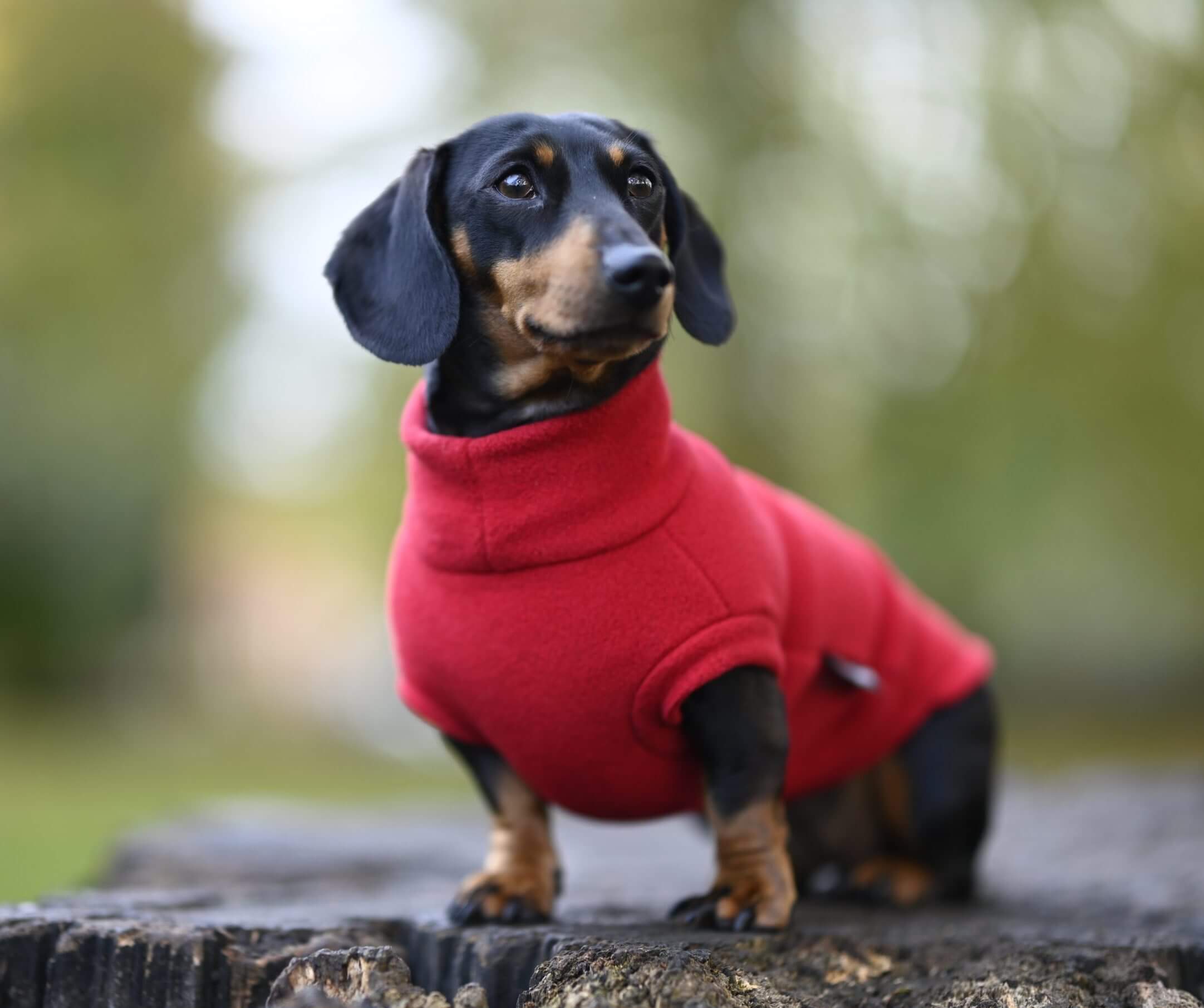Make Winter a Win for Your Dog

Look around, the leaves are brown. Yes, here comes winter. It’s time for all of us dog guardians to make adjustments for the coldest season. The cooler months bring the freedom of longer periods out in the sun. While exercise is as good for dogs as it is for us, it may be a challenge for some of our furry friends. We take a look at things to consider in winter for dog guardians.
Winter Chill
The tendency to hide from the cold is common to most people. Much like an echidna preparing for winter hibernation, we may feel like stocking up on food and seeking comfy, warm spots to snuggle up in. But we aren’t hibernators, and nor are our canine companions. Their predecessor, the wolf, remains active in winter. Wolves continue to hunt in snowy conditions, and grow a thicker coat and huddle with the pack to keep warm. Though wolf instincts remain, some dog breeds have lost all resemblance to their wild relatives. They may need a little help to cope with extreme cold.
The pineal gland is light sensitive and produces the hormone, melatonin. Melatonin brings on sleep, and with shorter days, it makes sense that melatonin levels increase for both us and our dogs in winter.
Spending more time indoors and less time moving in winter can trigger behavioural change. Some feel the need to seek out hot, comforting food and beverages. As the layers come off in spring, winter weight gain is a common complaint.
It may seem natural to increase our dog’s meals to give them an added layer of fat to keep them warm. But because they are likely to exercise less in winter, they do not need the higher calorie intake. Following the upward trend of human obesity, a worrying number of dogs are also considered obese or overweight. It can be hard to control our own cravings, but we can control what our dogs eat.
Maintaining regular exercise is important for humans and dogs for reducing levels of stress and maintaining the bond between guardian and dog. But is it cruel to walk your dog in the cold of winter?
Time in the Sun
It may seem that exercising would bring discomfort to our dogs in winter. But guardians report lower activity levels in their dogs in summer rather than winter. A Nottingham Trent University study reveals dogs owners who regularly exercise with their dogs throughout the seasons are less likely to perceive winter as a barrier to activity with their dog. This is a helpful pattern, considering the mental health benefits of walking with our dogs. Read How Dogs Improve our Mental Health for more.
The trick is to stick to a routine, and account for the effect of the cold. As well as rugging yourself up in layers, consider whether your dog needs a jumper or coat. Has their coat thickened for thermal protection? Or are they short haired and shivering? Check that doggy garments fit well and won’t restrict their movement.
As you pull on thick socks and sturdy boots, remember your dog’s paws. Some dogs will be just fine, but not all of them. Check their paws regularly, and watch for limping and other signs of discomfort. Icy cold streets can cause pain and cracked paw pads. Gently apply petroleum jelly and give their feet a break until they heal. Take them to your veterinarian if you aren’t sure how damaged their paws are.
For dogs that suffer from arthritis, get on top of it now before risking their comfort on a frosty winter morning. Aim for more frequent but shorter walks for arthritic and older dogs.
Allowing dogs to keep their coats long is a great idea in winter. Incorporate brushing into your cuddle time to prevent knots and matting. Maintain regular bathing, just ensure your dog is completely dry to avoid skin infections and chill.
Hidden Hazards
Higher rainfall along the eastern seaboard of Australia gave us a mild summer and wet ground. This high level of moisture is the perfect environment for mushrooms. Unless you are a mushroom enthusiast, prevent your dog from eating them on your walks to avoid toxic poisoning. Read 14 Common Household Hazards for more.
Hi-vis clothing is a great idea when night descends sooner than expected. As the days become shorter, you and your dog may disappear into the darkness. Jackets with reflective strips are an important safety measure; hi-vis vests sell for as low as $7 at Bunnings. Dog leads and collars with reflective strips will make your dog stand out in the dark.
The Dog House
Prepare for more indoor time for your dog in winter, rather than scurrying to find a solution when the coldest nights are already upon you. Apart from their own bed for sleeping, they will need a couple of other places to call their own in common areas. The living room and a space near the kitchen are two areas where your dog needs a place to rest. That way, they are near their family, and ready for brushing, playing or a cuddle.
Some dogs aren’t too fussed about the cold and are happy to remain outside. They will need an outdoor bed to protect them from the cold ground and shelter to shield them from icy winds. Some will need a dog jumper or coat. Older dogs need your watchful eye, on them and the weather. They may not realise it is too cold for them outside.
Enjoy the freedom of increased time out in the sun. With your dog as toasty warm and protected as you are, you can maintain your walking schedule. Use these tips to prepare for winter and snuggle up with your precious pooch.
